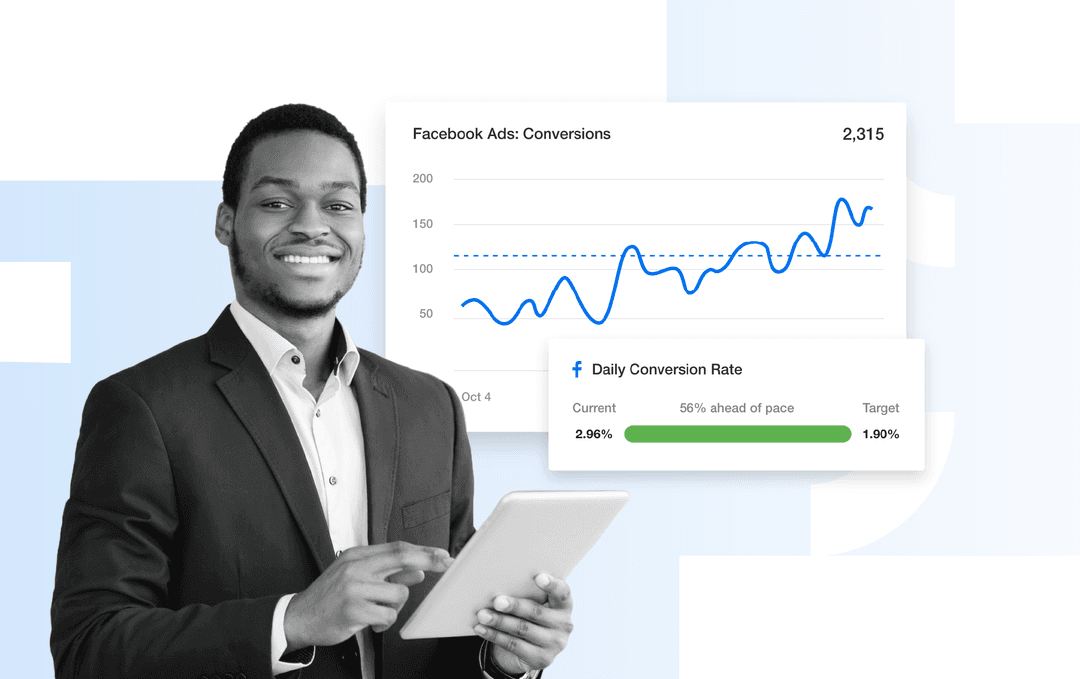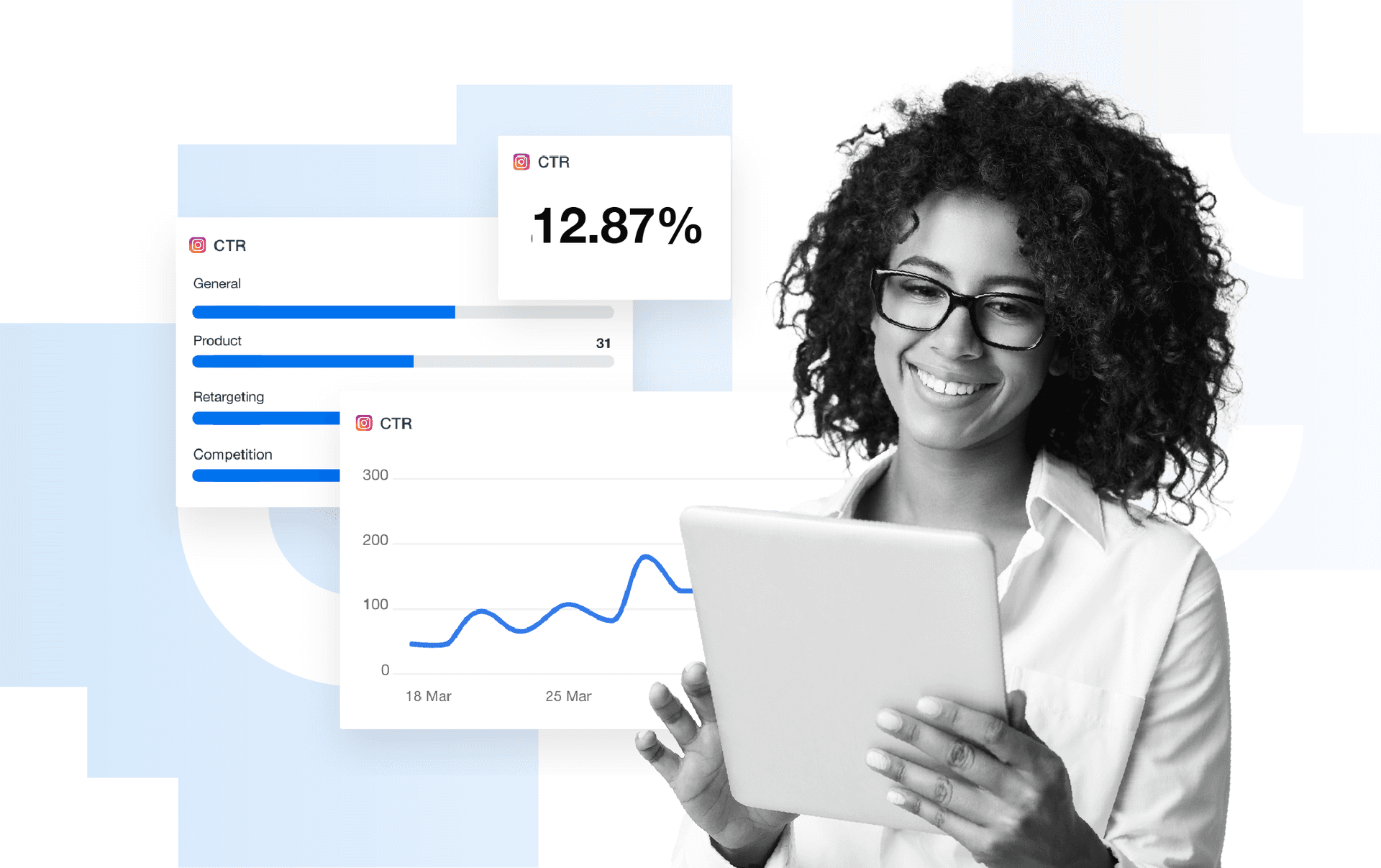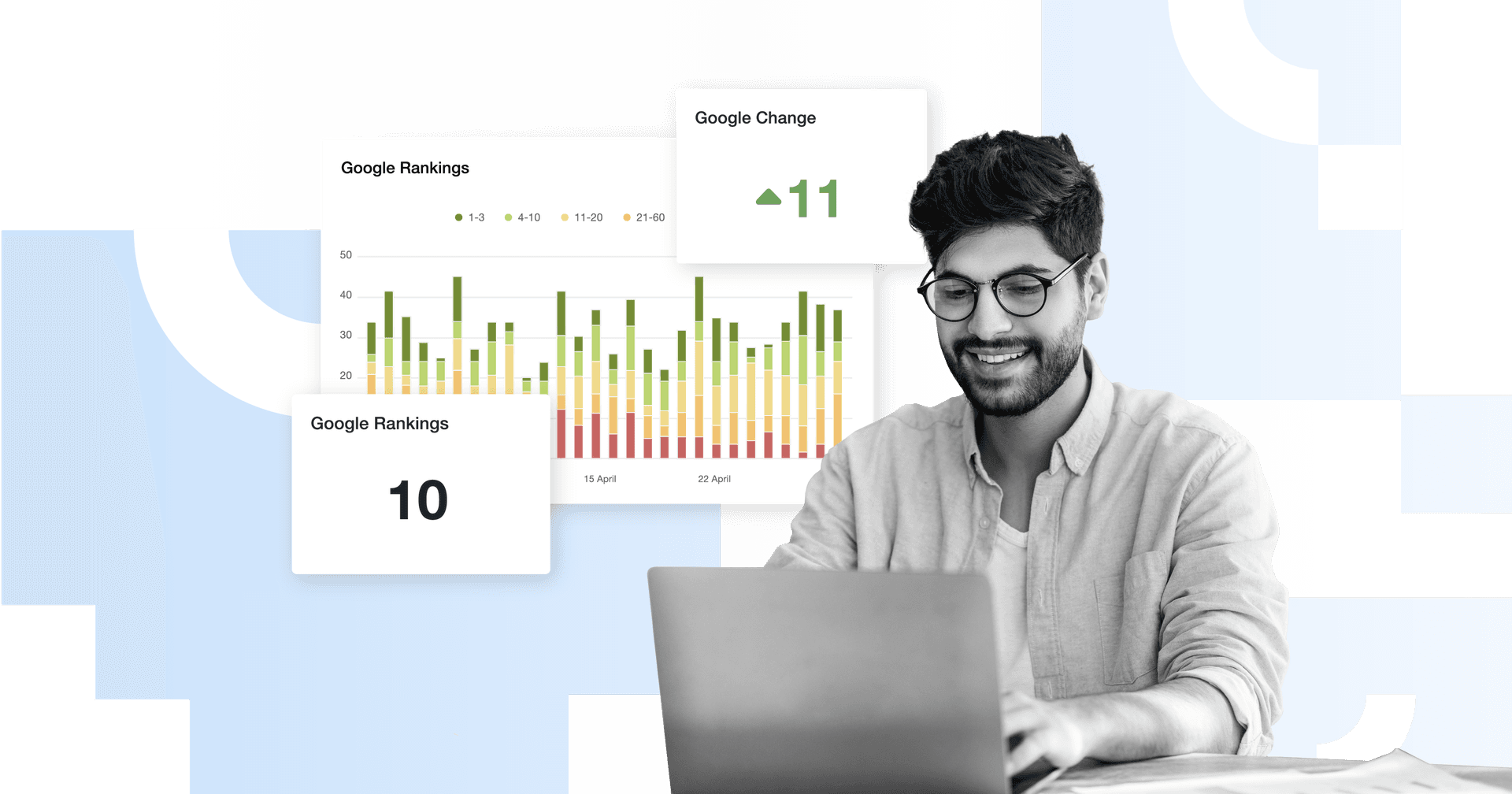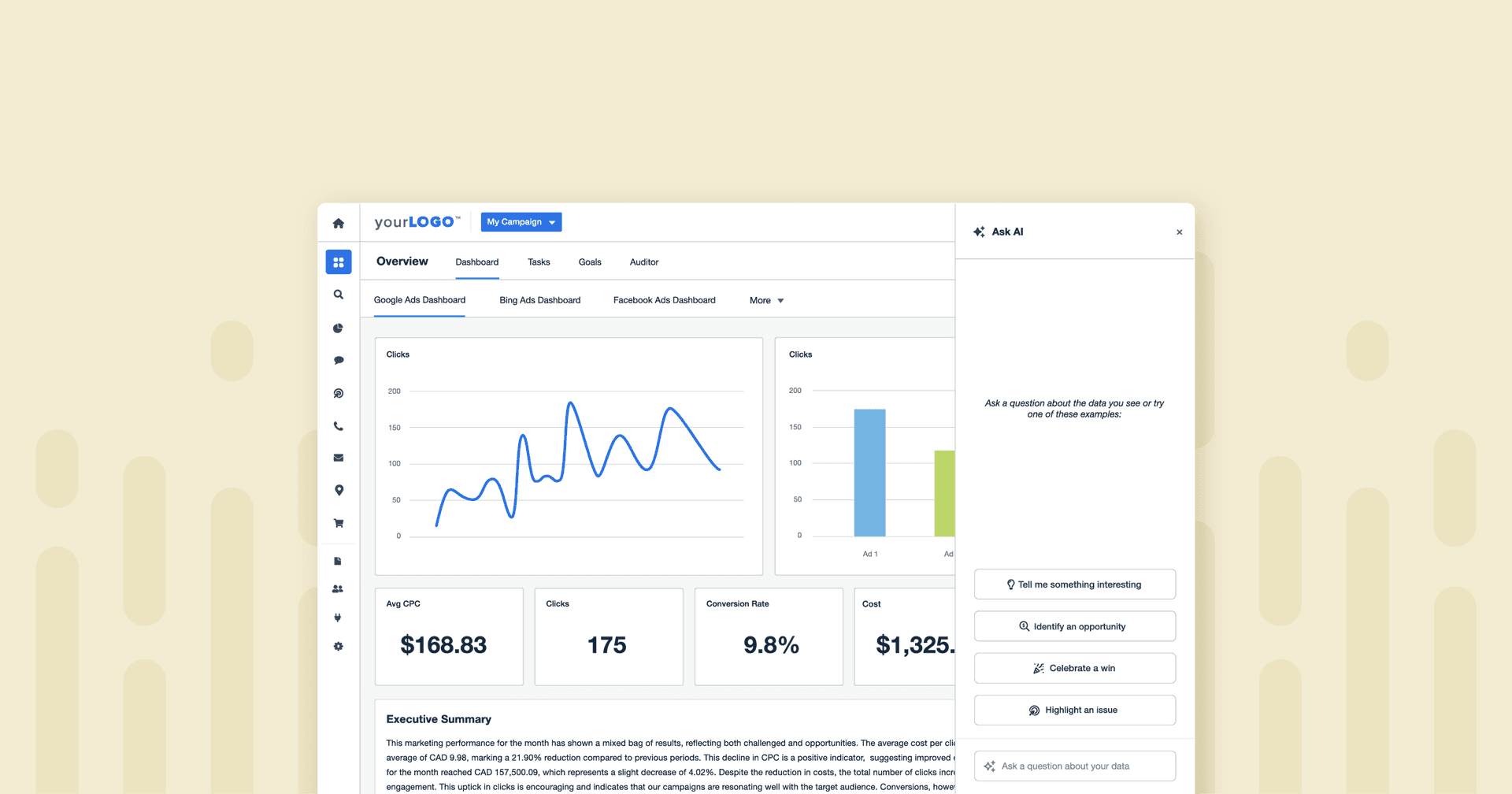Table of Contents
QUICK SUMMARY:
This article is your guide to building a data strategy roadmap template for 2025. We’ll explore the planning stages, choosing the right tools, and how to implement the strategy at your agency.
While most agencies excel at gathering data from existing data sources, the real challenge lies in aligning analytics initiatives with the clients’ business objectives to deliver results that truly matter.
A well-crafted data strategy roadmap serves as your agency's compass, guiding your data team through the complex process of turning client insights into actionable strategies. Whether you're looking to improve efficiency, increase sales, or demonstrate clear ROI to stakeholders, having the right framework in place makes all the difference between random data points and strategic advantage.
This comprehensive guide will walk you through the steps of building a data strategy roadmap that not only organizes your analytics efforts but positions your agency as an indispensable strategic partner.
From identifying urgent initiatives to implementing predictive modeling capabilities, you'll discover how to create a systematic approach that drives real business outcomes for your clients.
What is a data analytics strategy roadmap?
Customer data is your agency’s most valuable asset, but only if you’re putting it to use.
A solid data strategy roadmap lets you leverage an organization's data to achieve key business goals. It’s a structured approach to analyzing data to determine key performance indicators, gauge operational efficiency, and identify quick wins as well as areas for improvement.
The implementation process requires a deep understanding of your clients' current data landscape, existing data sources, and analytics maturity level. Your clients' data strategy relies on relevant data sources to determine how to allocate resources effectively. You’ll also need to map out your data infrastructure and determine your clients' data governance policies.
Done right, a data strategy roadmap helps drive data-driven decision making and gives you concrete evidence to show key stakeholders how your work is moving the needle on their business objectives.
Why your agency needs a data analytics strategy roadmap in 2025
Most agencies have no issue collecting client data, it’s deciding what to do with it that’s the problem. Without a system in place, data becomes disorganized, and you lose out on key insights into your clients’ marketing activities.
In order to steer the ship, you need to know which direction you want to go. A data strategy roadmap points the way, helping you leverage client data to glean valuable insights around customer engagement, track progress, and shape your clients’ overall business strategy.
For instance, imagine you launch a campaign that lands perfectly with a client’s audience. Without a strategy, it’s just a lucky win. With a roadmap, you can study the results, replicate the approach, and build it into your long-term playbook.
By creating a plan for bringing your clients’ data together and managing it effectively to drive business success, you ensure that data is used to its fullest potential.
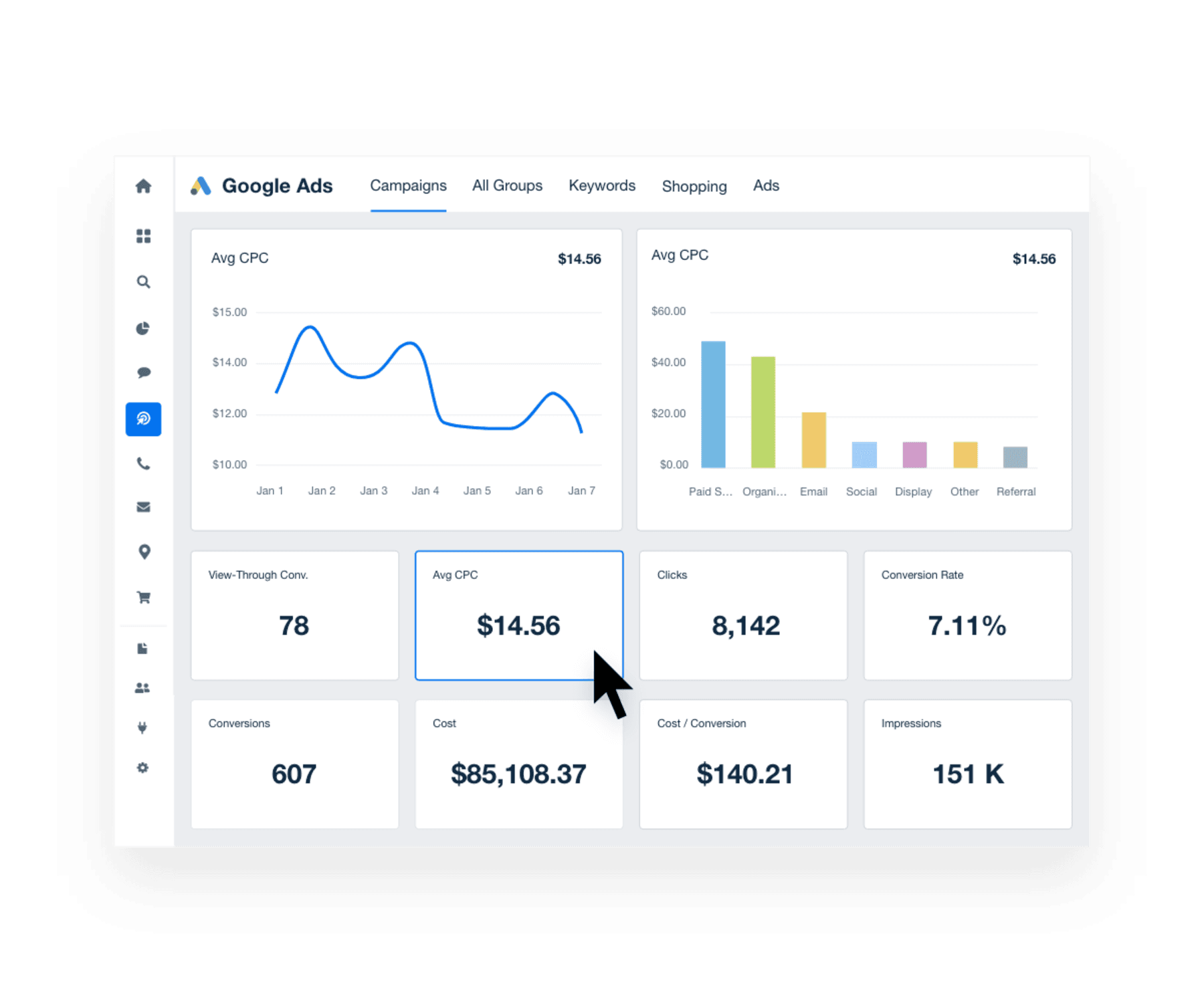
Use AgencyAnalytics to assess current data maturity, identify growth opportunities, and deliver comprehensive strategy frameworks that position your agency as an indispensable strategic partner–try it free for 14 days.
The benefits of roadmapping your data strategy
One good decision can become a trend, or it can disappear into obscurity. The difference is how you track your decisions and react to success or failure.
For example, let’s say you put together a killer ad campaign for a client. It hits all the right notes, and the response from your client’s target audience is nothing short of astounding. Do you take it as a stroke of good luck, or study it to identify the key factors that drove success so you can replicate these winning strategies across future campaigns? By collecting, analyzing, and applying this data the right way, you can use this campaign as a launching pad for your client’s future success.
A data strategy roadmap gives your agency a clear framework to make smarter, faster, and more profitable decisions.
Here’s how to put it into action:
Turn wins into repeatable success: Don’t let great campaigns be one-offs. Track what worked, why it worked, and how to replicate it. Use data from every success to build repeatable playbooks for future campaigns.
Cut waste and maximize efficiency: Replace trial and error with evidence-based decisions. Focus resources on proven, high-impact strategies to reduce ad spend waste and scale success predictably.
Unlock deeper customer insights: Use audience data to refine messaging, personalize offers, and create content that resonates. The result? Higher engagement, stronger connections, and more conversions.
React in real-time: Real-time analytics show what’s working and what’s not, so you can pivot fast, optimize underperforming campaigns, and protect budgets before they’re wasted.
Prove ROI and retain clients: Clients want proof that their marketing dollars are working. Consistently report measurable results and data-backed wins to strengthen trust and long-term relationships.
Elevate your agency’s positioning: Move beyond execution. Provide strategic, data-driven guidance that positions your agency as a trusted growth partner, not just another vendor.
Spot and seize growth opportunities: Use predictive analytics to forecast trends, identify untapped markets, and shape client offerings for maximum profitability.
Our clients rely on accurate data. Accuracy is extremely important because it allows our clients to make important decisions as the data rolls in, and as an agency, it allows us to advise based on the data for a better return on their investments.
Vinod Samuel, Operations Director, myheartcreative
Key components of a data analytics roadmap
Now that we have an understanding of what a data analytics roadmap is, and the benefits of developing one, let’s take a look at the key components to include in your own.
Define client business objectives and goals
What do your clients want? What do they really, really want?
While not everyone may catch the Spice Girls reference, the message is clear: every strong roadmap begins by pinpointing your clients’ true destination.
Don’t just take their stated goals at face value–dig deeper to understand how those goals connect to the bigger picture of their vision and long-term strategy. Then, assess whether those goals are achievable given their resources, budget, and market conditions.
Here’s how:
Strategic direction assessment: Map out one-, three-, and five-year milestones, identifying both potential roadblocks and opportunities along the way.
Define success metrics: Establish benchmarks that clarify expected outcomes and impact, ensuring analytics efforts align with wider business objectives.
Balanced goal setting: Blend quick wins with transformational goals to keep momentum while building toward larger ambitions.
Outcome-focused planning: Prioritize measurable business value over technical complexity, so analytics directly improves business performance.
Adaptable framework: Build in flexibility through regular reviews, allowing strategies to evolve alongside capabilities and market shifts.
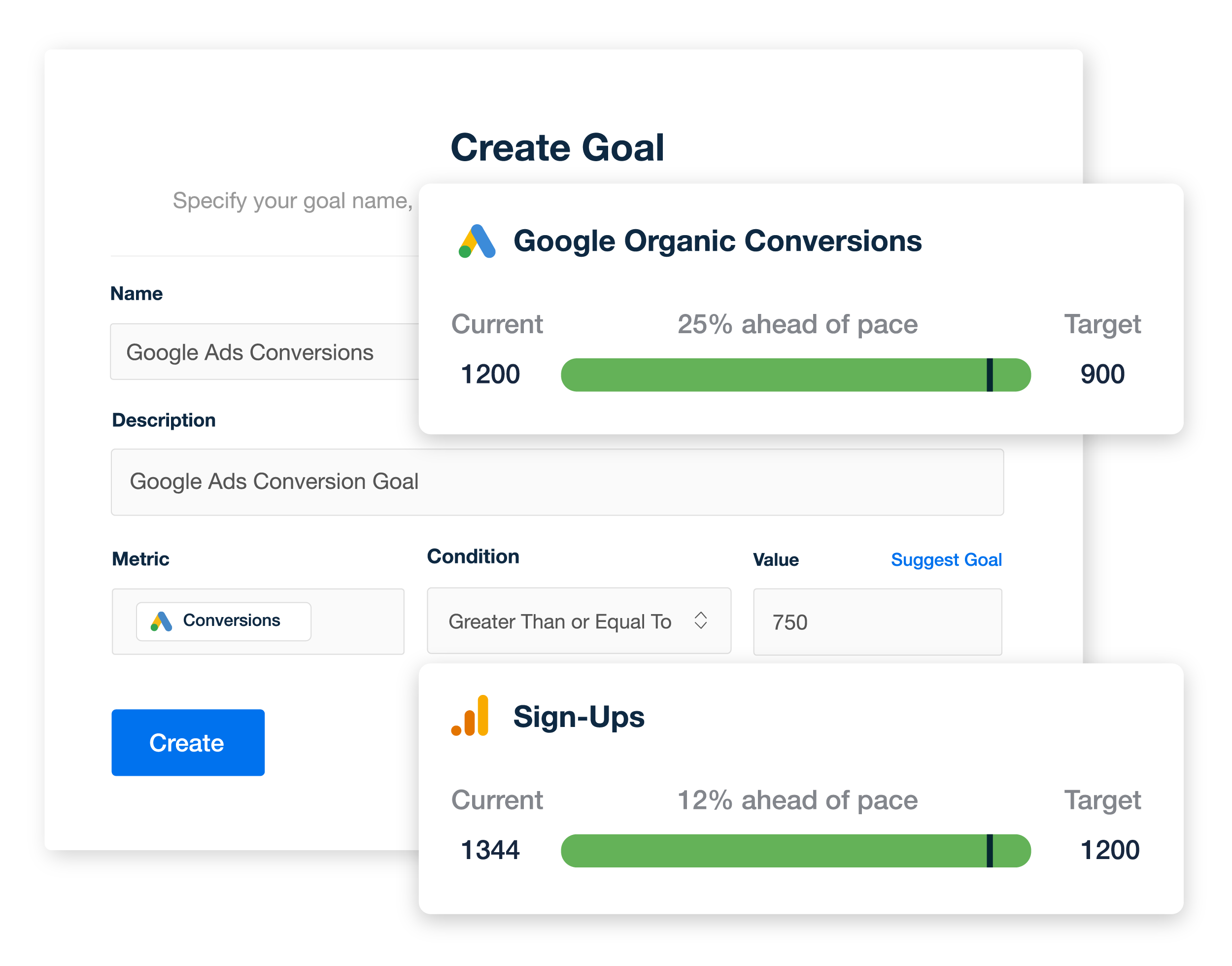
With features like AI-powered insights, automated reporting, and live dashboards, AgencyAnalytics helps you save time, identify trends, and surface critical findings. See what AgencyAnalytics can do for your business with a 14-day free trial.
Current state assessment
Before building your client's data strategy roadmap, evaluate their existing data landscape and technical infrastructure. This step involves identifying all critical initiatives needed to support their organization's unique requirements. Your assessment of the current data landscape should examine the organization's data flows, data architecture, and existing governance processes.
Understanding their current state, including regulatory requirements and data governance policies, creates a realistic foundation for growth and reveals immediate opportunities for improving operational efficiency.
This assessment should include:
Cataloging all relevant data sources across departments and systems, including social media platforms, email marketing tools, CRM systems, website analytics, and any third-party integrations your clients currently use.
Documenting existing data collection processes and quality measures to understand what's already working well and where gaps exist in your clients’ current data pipeline.
Identifying gaps between current capabilities and future needs by comparing what you can currently measure against what your clients need to achieve their business objectives.
Evaluating compliance with data privacy regulations such as GDPR, CCPA, and other relevant frameworks to ensure your clients’ data strategy meets all legal requirements from day one.
Data governance
Strong data governance ensures your clients’ insights are reliable, secure, and actionable. Without proper governance, even the best analytics tools won't deliver trustworthy results. Your clients’ governance framework should establish clear protocols for data quality, security, access controls, and compliance.
Key elements include defining data ownership and stewardship roles, establishing data quality standards and validation processes, implementing security measures and access controls, creating documentation and metadata management procedures, and setting up regular audits and compliance checks.
Think of data governance as the foundation that everything else is built on. Get this right, and your clients’ entire data strategy becomes more reliable and valuable.
Technology stack
Your technology infrastructure includes the business intelligence tools, advanced analytics software, databases, cloud storage, and data platform needed to support your clients’ goals.
The right tech stack should seamlessly integrate with your clients' existing systems while providing the flexibility to scale as their needs grow. This is where a comprehensive platform like AgencyAnalytics really shines.
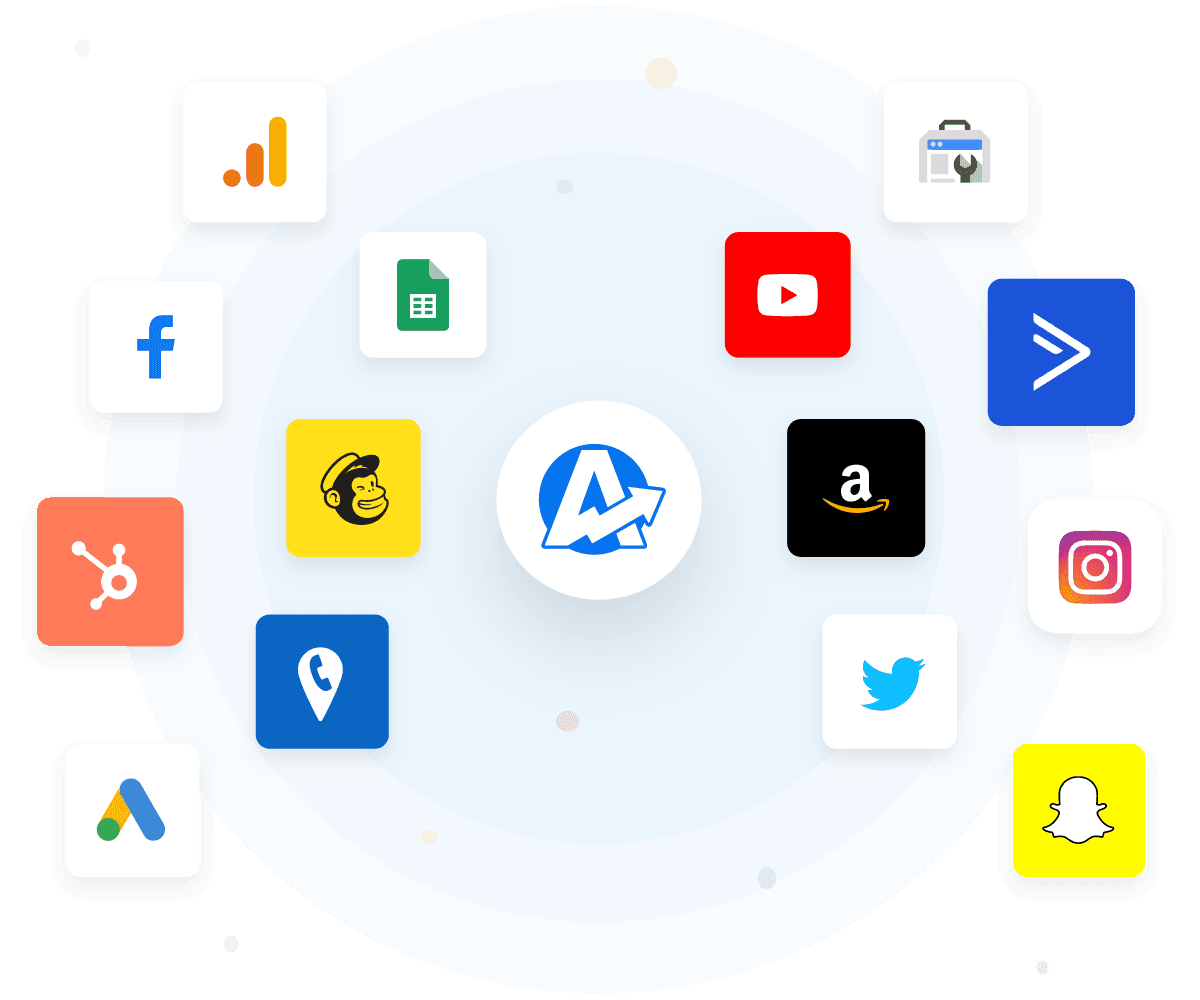
Rather than juggling multiple disconnected tools, AgencyAnalytics provides an all-in-one solution that consolidates data from over 80 marketing platforms into unified dashboards and automated reports.
Key capabilities to look for in your tech stack include:
Real-time reporting capabilities: AgencyAnalytics excels here by pulling live data from all your clients' marketing channels, ensuring your reports always reflect the most current performance metrics.
Automated data collection and processing: Instead of manually gathering data from Facebook Ads, Google Analytics, SEO tools, and other platforms, AgencyAnalytics automates this entire process, saving hours of manual work. AI data analysis tools can process large volumes of data in no time, generating actionable insights, and identifying patterns to inform decision-making.
Customizable dashboards and visualizations: Create white labeled, branded reports and dashboards tailored to each client's specific KPIs and business objectives.
Integration with popular marketing platforms: With native integrations for Google Ads, Facebook, Instagram, LinkedIn, email marketing tools, CRM systems, and more, AgencyAnalytics eliminates the data silos that plague many agencies.
AgencyAnalytics prioritizes user-friendly interfaces and provides comprehensive training resources that help your team to catch on quickly. The platform's intuitive design means your team can focus on analyzing insights and applying them toward a data-driven marketing strategy rather than wrestling with complex software.
Team and skills
Everyone from the CEO to the customer service manager needs to understand the strategy, their role in supporting it, and how it relates to business objectives. Building a data-driven culture requires both technical expertise and organizational buy-in.
Assess your current team's capabilities and identify skill gaps in areas like data analysis and interpretation, data storytelling and client communication, visualization and reporting, statistical analysis and modeling, data privacy and compliance, and strategic thinking and business acumen.
Identify areas for improvement, then invest in training programs, hire specialists where needed, and create clear communication channels between technical and business teams to ensure your data strategy delivers real business value.
We always craft our data stories based on what is most important to our clients. At different parts of clients' journeys, revenue growth is more important than cost savings, and vice versa, so ensuring you are on the same page is vital, and this helps determine what data points are the most important.
Tom Gibson, Founder, Pilot
Roadmap timeline
A realistic timeline is the backbone of any successful data strategy implementation. Without clear milestones and deadlines, even the best-planned initiatives can drift indefinitely or lose momentum when competing priorities arise.
Your roadmap timeline should balance ambition with practicality, accounting for dependencies between different components and the natural learning curve your team will experience. Break your timeline into three distinct phases:
Phase 1 - Foundation (Months 1-3): Focus on quick wins and essential infrastructure. This includes conducting your current state assessment, auditing data tracking basics across all client platforms, establishing basic data governance protocols, implementing core tracking and reporting systems, and training your team on new tools and processes.
Phase 2 - Expansion (Months 4-9): Build upon your foundation with more sophisticated analytics capabilities. This phase typically involves integrating additional data sources, developing advanced reporting and visualization capabilities, implementing predictive analytics models, and refining your data governance framework based on early learnings.
Phase 3 - Optimization (Months 10-12+): Focus on advanced capabilities and continuous improvement. This includes deploying machine learning algorithms, implementing real-time decision-making systems, expanding into new analytics use cases, and establishing a culture of continuous optimization and experimentation.
Remember to build buffer time into each phase for testing, to gather feedback, and to make inevitable adjustments. A timeline that looks aggressive on paper but accounts for real-world complexities will serve you much better than an overly optimistic schedule that sets everyone up for frustration.
Implementation and monitoring
Successful implementation requires ongoing attention, regular monitoring, and the flexibility to adapt as you learn what works and what doesn't.
Establish clear accountability: Assign specific owners for each component of your roadmap, with clear deliverables and deadlines. Create regular check-in meetings to review progress, address obstacles, and make necessary adjustments.
Monitor key performance indicators: Track both technical metrics (data quality scores, system uptime, user adoption rates) and business metrics (client satisfaction, campaign performance improvements, operational efficiency gains) to ensure your data strategy is delivering real value.
Create feedback loops: Establish regular touchpoints with clients and internal stakeholders to get their feedback on reports, dashboards, and insights. This feedback should drive continuous improvement in both your technical implementation and strategic approach.
Plan for iteration: No data strategy survives first contact with reality unchanged. Build regular review periods into your timeline where you assess what's working, what isn't, and what adjustments need to be made.
Document everything: Maintain detailed documentation of your processes, decisions, and learnings, including standardized templates for writing data analysis reports, process workflows, and analytical methodologies. This creates institutional knowledge that survives team changes and provides valuable insights for future roadmap development.
The key to successful implementation is treating your roadmap as a living document that evolves based on experience, changing business needs, and new opportunities. Regular monitoring and adjustment are signs of a mature, responsive approach to data strategy.
5 steps to building a data strategy roadmap
1. Identify KPIs and milestones based on business goals and outcomes
To guide this conversation and align with your client’s business objectives, ask targeted questions such as:
“What does success look like to you?” This question helps you understand not only their priorities but also the KPIs and metrics you need to track and report on to demonstrate success.
“What areas of business operation need the most improvement?” Review current data and identify bottlenecks or obstacles in their current operations. From there, determine how marketing efforts can have the most significant impact and address their most pressing needs.
“Do you have a system in place to track, monitor, and manage your goals?” Goals are only helpful if they’re measurable. Asking this question gives you insight into your client’s current tracking capabilities (if any) and highlights potential gaps. From there, you can put together an actionable plan to close those gaps and ensure progress is consistently measured and managed.
We believe that metrics are only useful if they help to drive decision-making. As a result, we focus on identifying actionable metrics that can be used to inform and improve marketing efforts. To do this, we start by taking a close look at goals. Then, we identify the key performance indicators (KPIs) that measure progress towards those targets.
Guy Hudson, Founder, Bespoke Marketing Plans
2. Prioritize initiatives and deliverables
Not all data initiatives are created equal. Some will deliver quick wins that build momentum, while others represent longer-term investments that transform how your clients operate. The key is finding the right balance.
Start by categorizing potential initiatives into three buckets:
Immediate impact (0-3 months) could look like setting up tracking for key metrics, creating automated reports for existing campaigns, or implementing A/B testing protocols.
Medium-term wins (3-12 months) might mean integrating multiple data sources, developing predictive models, or building comprehensive customer journey maps.
Transformational projects (12+ months) might include implementing advanced attribution modeling, creating AI-powered optimization systems, or developing custom analytics platforms.
Consider factors like your client’s resource requirements, potential ROI, complexity, and strategic importance when making these decisions.
3. Develop implementation timelines
With your client’s priorities in order, it's time to create realistic timelines that account for dependencies, resource constraints, and the inevitable unexpected challenges that arise in any project.
Break each client initiative into specific milestones with clear deliverables and success criteria. Build in buffer time for testing, revisions, and stakeholder feedback. Consider seasonal factors that might affect your client’s business, and plan your rollouts accordingly.
Adjusting timelines as you go isn't ideal. It's better to under-promise and over-deliver than to set unrealistic expectations that damage client relationships. A well-planned timeline builds confidence and keeps everyone aligned on expectations.
4. Determine budget, resource, and personnel allocation
Once you've figured out your client's goals, it's time to plot out the way to get there. This means figuring out what it will take to get there, what it's going to cost, and who is going to own the milestones along the route to success.
Consider both direct costs (software licenses, tools, external consultants) and indirect costs (internal team time, training, opportunity costs). Don't forget to factor in ongoing maintenance and support requirements.
Assign clear ownership for each component of the roadmap, ensuring team members understand their responsibilities and have the resources they need to succeed. Establish regular check-ins and progress reviews to keep everything on track.

5. Review for accuracy and approval
Before finalizing your roadmap, conduct a thorough review with all stakeholders. Verify that goals align with business objectives, timelines are realistic, resources are adequate, and success metrics are clearly defined.
Present your roadmap using data visualization examples like clear visual timelines, resource allocation charts, and milestone tracking dashboards that make it easy for stakeholders to understand the plan at a glance and track progress over time.
Get formal approval from key stakeholders and document any assumptions, constraints, or risks that could affect implementation. This creates accountability and ensures everyone is working from the same playbook.
Turn your data into roadmap material
These days, everyone and their sister is starting a marketing agency. To succeed, you need to be able to set yourself apart.
The agencies that thrive in 2025 and beyond will be those that can turn data into actionable insights, insights into improved performance, and improved performance into lasting client relationships. Your data strategy roadmap is the foundation that makes all of this possible.
The best roadmap is the one you actually implement. Start with small wins, build momentum, and gradually expand your capabilities. Your clients–and your bottom line–will thank you for it.
AgencyAnalytics empowers digital marketing agencies to build comprehensive data strategy roadmaps that win and retain clients. Seamlessly integrate multiple data sources, create actionable insights, and deliver strategic frameworks that drive measurable business growth. Transform raw data into client success stories with our unified analytics platform. Start your 14-day free trial today!

Written by
Anya Leibovitch is a B2B SaaS content marketing specialist. She partners with tech companies to design and execute their content marketing strategy. A writer first and foremost, she harnesses the power of storytelling to build and strengthen relationships between companies and the clients they serve.
Read more posts by Anya LeibovitchSee how 7,000+ marketing agencies help clients win
Free 14-day trial. No credit card required.



